The NPS® Advantage: Why Every PEO Should Care About It?

- NPS is more than a score for PEOs—it’s a real-time indicator of client loyalty, satisfaction, and potential growth through retention and referrals. When measured consistently, it helps identify service gaps early.
- PEOs can leverage both relational and transactional NPS to gather feedback across client journeys. Relational surveys give a broad view, while transactional ones capture specific interaction insights.
- Improving NPS starts with acting on feedback—not just collecting it. Addressing detractors, engaging promoters, and sharing results internally can transform insights into tangible improvements.
- Common NPS pitfalls include inconsistent measurement, ignoring detractors, and focusing solely on benchmarks. The true value comes from continuous improvement based on your own trends.
- Tools like ClearlyRated and SurveySparrow help automate surveys, provide real-time feedback, and integrate with PEO workflows—making it easier to boost satisfaction and build loyalty.
"How likely is it that you would recommend ________ to a friend or colleague?"
Are you familiar with this question? This simple question unlocks a goldmine of insights, and for PEOs, it's much more than just a satisfaction metric. NPS (Net Promoter® Score) is a powerful pulse check on client loyalty, a predictor of business growth, and a direct window into the health of your client relationships.
So, why should PEOs care about NPS? When used right, it doesn't just measure satisfaction; it drives action, fuels client-centric cultures, and serves as an early warning system that can make the difference between retention and churn.
This blog explores how PEOs can leverage NPS to spot client or employee issues before they escalate and drive growth through stronger retention and organic referrals.
Understanding NPS Net Promoter Score
At its core, Net Promoter Score (NPS) measures how likely your clients are to recommend your PEO services to others. However, for PEOs, NPS is more than a satisfaction score; it's a real-time pulse check on client loyalty and a leading indicator of retention, referrals, and revenue growth.
The calculation itself is simple but revealing. Clients are asked a single, powerful question:
"How likely are you to recommend our PEO services to a friend or colleague?"

Based on their response (on a scale of 0 to 10), clients fall into three categories:
- Promoters (9-10): Your loyal advocates—the clients who are highly satisfied and enthusiastic enough to recommend your PEO to others.
- Passives (7-8): Moderately satisfied clients who aren't unhappy but aren't actively promoting you. They are vulnerable to competitor outreach if their needs aren't continually met.
- Detractors (0-6): Unhappy clients who are at risk of churning and could damage your reputation through negative word-of-mouth.
The formula:
NPS = % of Promoters – % of Detractors
This calculation leaves you with a score between -100 and +100, offering a clear numerical reflection of client loyalty. PEOs can measure NPS in two ways, depending on the type of insight they need:
- Relational NPS: Sent at regular intervals (e.g., quarterly or semi-annually) to track overall client sentiment across the partnership. This is ideal for PEOs, where long-term relationships are key to success.
- Transactional NPS: Sent after specific interactions like onboarding, payroll processing, or a support request to measure satisfaction at key touchpoints. This helps PEOs pinpoint friction in critical processes.
A high NPS predicts referrals, renewals, and revenue stability. Conversely, a low NPS signals service gaps, unmet expectations, or broken processes that need immediate attention.
Why does NPS matter for PEOs?
NPS isn't just a metric; it's a dynamic indicator that, when properly contextualized, can enhance customer loyalty and elevate your brand's reputation.
Interestingly, a Reddit thread recently highlighted that while NPS might sometimes feel influenced by survey timing, its immediate snapshot of client sentiment remains valuable when used alongside other performance indicators.
Client retention and satisfaction
In a relationship-driven business like a PEO, client trust is everything. This simple score acts like a real-time health check on your client relationships. A steady or rising NPS signals strong loyalty, while a drop can be an early sign of frustration. This gives you time to step in and fix issues before clients leave.
PEOs with high NPS tend to have more substantial retention rates and see more client referrals because happy clients are your best source of organic growth. NPS is a feedback loop in action. It invites clients to tell you what's working and what's not. Following up with clients who give lower scores uncovers the real reasons behind their dissatisfaction, giving leadership clear and actionable insights to improve processes, enhance service, and even clarify areas where clients may misunderstand what you offer.
Brand reputation and referrals
Knowing how many clients would recommend you is invaluable for PEOs, where trust and service consistency define long-term success. NPS is also a proven growth driver. When businesses rely on you to handle critical functions like payroll, benefits, and compliance, their satisfaction directly influences retention and your reputation in the market. That's precisely where NPS comes in.
When you consistently turn passives and detractors into promoters, you're improving service and actively building a pipeline of loyal advocates who will recommend you to their peers.
How to Measure NPS for PEOs?
Effectively measuring NPS isn't just about collecting numbers but about capturing the true voice of your clients and using that insight to drive real improvements. For PEOs, this means determining how many of your clients are enthusiastic advocates (scoring 9-10) versus those who may be at risk (scoring 0-6). This score gives you a snapshot of overall client sentiment that can be tracked over time.

Here are a few components to consider:
1. Survey Collection & Platforms:
Companies can collect NPS data through various channels. Many use dedicated survey platforms like Clearlyrated, which allows you to send NPS surveys via email, SMS, WhatsApp, pop-ups, or phone calls. The key is to choose a method that maximizes response rates and delivers reliable, real-time insights.
2. Frequency for a Holistic View:
Rather than relying solely on an annual survey, a quarterly approach provides a more comprehensive picture of client sentiment throughout the year. You can track year-to-date performance by gathering quarterly feedback and observing how seasonal factors or specific events influence customer experiences.
For example, an annual survey conducted during a particularly stressful month might skew your results negatively, while one in a period of high customer satisfaction could inflate your score. Quarterly surveys help balance these variances and reveal genuine trends over time
3. Targeted Timing:
Timing is crucial. Relationship surveys should be sent only once per client in the designated quarter, ensuring timely feedback reflects the client's overall experience. For transactional touchpoints, immediate follow-up is essential to capture fresh, accurate impressions of a specific interaction.
4. Expanding the Feedback Loop – eNPS:
Another best practice is to extend your survey efforts to include employees through eNPS (Employee Net Promoter Score). "How likely are you to recommend our company as a workplace?". With this question, you not only gauge internal satisfaction but also uncover insights that often correlate with client satisfaction. When eNPS mirrors a strong client NPS, it reinforces the positive culture driving employee and customer loyalty.
Interpreting NPS Scores in the PEO Industry
At ClearlyRated, we've been helping service firms track their NPS since 2010. Over the years, we've consistently benchmarked NPS across various industries in the US.
According to our survey, 1-in-3 customers leave after a single bad experience, and 92% will abandon your brand after two or three negative interactions. Net Promoter Score benchmarks can vary widely by industry, but here are some broad guidelines:
- Above 0: Indicates that your business has more promoters than detractors—a basic yet positive starting point.
- Above 20: Suggests a healthy balance of customer satisfaction, reflecting a generally content customer base.
- Above 50: Demonstrates excellent performance, signifying a robust, customer-centric organization.
- Above 70: Reflects world-class customer loyalty and satisfaction, placing you among the top-tier companies in your sector.
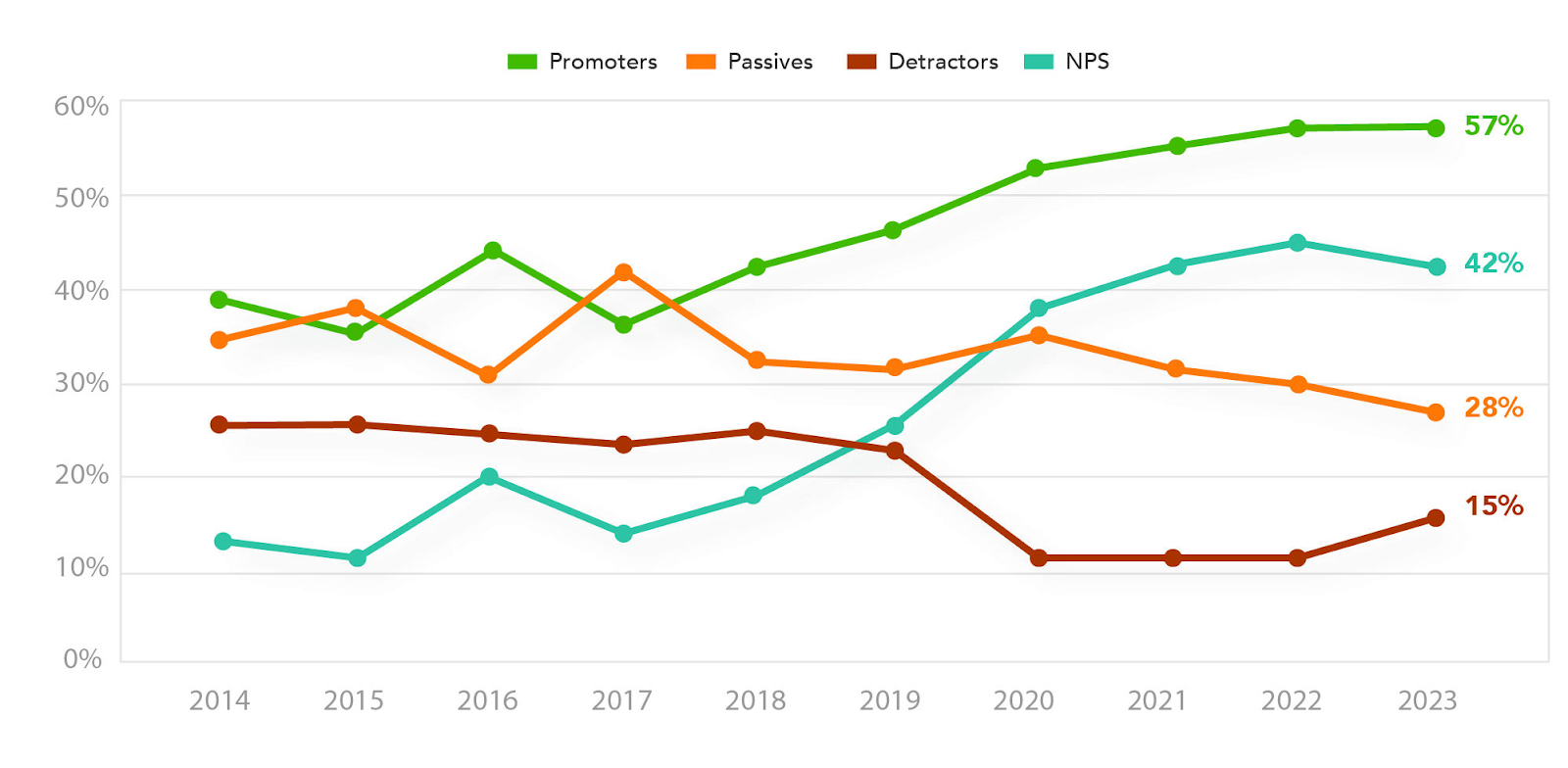
- Staffing: 36% (an increase of +38% since the last assessment)
- Accounting: 41% (up by +2% from the previous evaluation)
- Insurance: 36% (a decrease of -6% compared to the prior period)
Optimizing NPS for PEOs to Drive Business Growth
Enhancing customer service
Client satisfaction depends on seamless HR, payroll, and benefits administration for a PEO. A strong NPS strategy starts with responsive and proactive service. Streamlining support channels such as self-service portals, live chat, and dedicated account managers ensures clients and employees receive timely assistance. Regular training for service teams on compliance updates and HR best practices can improve interactions, reduce frustration, and boost satisfaction scores.
Addressing negative feedback proactively
Low NPS scores often reveal pain points that, if ignored, lead to client churn. Instead of viewing detractors as lost causes, PEOs should see them as opportunities for retention. Implementing a structured follow-up process where dissatisfied clients receive personalized outreach can resolve concerns before they escalate. Addressing payroll delays, benefit confusion, or compliance concerns in real time demonstrates accountability and can turn a detractor into a loyal client.
Using NPS insights for marketing and sales
A high NPS is not just a retention metric. It is also a sales asset. PEOs can leverage positive feedback in case studies, testimonials, and referrals to build trust with potential clients. Segmenting NPS responses also helps identify ideal client profiles, allowing sales teams to target prospects that align with high-retention accounts. Showcasing an industry-leading NPS proposal score reinforces credibility and sets your PEO apart from competitors.
Turning promoters into brand advocates
Your happiest clients, your promoters, are your best salespeople. PEOs can turn promoters into active advocates by encouraging them to leave online reviews, participate in referral programs, or share testimonials. Exclusive client appreciation events or VIP resources can strengthen loyalty and deepen relationships. By nurturing these advocates, PEOs drive organic growth and reinforce their reputation as trusted HR partners.
Common Pitfalls in PEO NPS Survey:
Even though NPS is a powerful tool, missteps can limit its effectiveness. Avoid these common mistakes to maximize insights and improve client and employee satisfaction.
1. Asking the Wrong Questions
The NPS methodology is built around a single, standardized question:
NPS (for clients): "How likely are you to recommend our PEO services to a friend or colleague?"
eNPS (for employees): "How likely are you to recommend our company as a great workplace?"
Altering these questions or adding unnecessary details can skew responses. While additional questions about service quality or employee experience are helpful, they should be separate from the core NPS or eNPS question.
Pro Tip: Stick to the standard NPS question and add a follow-up for deeper insights. Use survey logic to trigger relevant follow-up questions based on responses for more meaningful data.
2. Focusing Only on the Score, Not the Insights
Tracking your NPS score is essential, but it's just a number without proper analysis. High scores indicate loyalty, while low scores signal issues. The real value comes from understanding why customers feel the way they do.
Pro Tip: Use NPS as a starting point and analyze feedback trends. Pair NPS with metrics like Customer Satisfaction Score (CSAT) for clients and Employee Engagement surveys for employees to get a fuller picture.
3. Failing to Segment NPS Data
An overall NPS score provides a broad view, but segmenting data by client industry, company size, or employee role can reveal significant trends. For example, long-term clients may have a higher NPS, while new clients may face onboarding challenges.
Pro Tip: Break down NPS data by relevant segments to uncover trends and tailor strategies for different customer groups. Compare NPS and eNPS trends—if clients are happy but employees aren't, it could indicate service delivery issues stemming from internal challenges.
4. Ignoring Detractors
Clients rating your PEO services 0-6 (detractors) are at risk of leaving, and employees with low eNPS scores may disengage or quit. Many PEOs focus on boosting promoters without addressing dissatisfaction, leading to churn and high turnover.
Pro Tip: Follow up with detractors to understand their dissatisfaction and take action to resolve issues. Create a structured process for reaching out to detractors, offering solutions, and demonstrating improvements based on their feedback. [Bonus: Follow-up Template]
5. Not Engaging Promoters
Promoters (scores of 9-10) are valuable advocates for both NPS and eNPS. Happy clients can provide referrals, while engaged employees contribute to a strong company culture and better service delivery.
Pro Tip: Follow up with promoters, thank them for their support, and encourage them to provide testimonials or refer new clients. Offer promoters referral incentives or exclusive insights to deepen their loyalty and increase word-of-mouth marketing.
6. Measuring NPS Inconsistently
Sporadic measurement of NPS and eNPS makes it difficult to track trends and address issues proactively. Without consistent data, you might miss early warning signs of dissatisfaction.
Pro Tip: Set a regular survey schedule (monthly, quarterly, or biannually) to monitor satisfaction trends over time. Align survey timing with key milestones like client onboarding, contract renewals, or employee performance reviews for more relevant feedback.
7. Collecting Feedback Without Taking Action
Survey fatigue is real; clients and employees will stop responding if their feedback isn't leading to changes. The value of NPS lies in how organizations use the insights to make meaningful improvements.
Pro Tip: Close the feedback loop—communicate the actions taken in response to survey results and keep clients and employees informed. Share improvements via client newsletters, team meetings, or company-wide updates to show that feedback leads to fundamental changes.
8. Relying Too Heavily on Industry Benchmarks
While industry benchmarks provide context, every PEO serves a unique client base with specific needs. Comparing your NPS to competitors can be helpful, but internal progress is a better measure of success.
Pro Tip: Use benchmarks as a reference, but focus on continuous organizational improvement. Set internal NPS and eNPS goals based on past performance rather than competitor data.
9. Not Sharing NPS Results Internally
NPS and eNPS insights shouldn't be limited to leadership—they should be shared across teams to drive improvements. Employees need to understand how their actions impact client satisfaction, and HR teams need to see eNPS trends to address workplace issues.
Pro Tip: Regularly communicate NPS and eNPS findings with service teams, HR, and leadership to align strategies. Create internal dashboards to track trends and use client and employee feedback to guide training and process improvements.
10. Asking for NPS Feedback at the Wrong Time
Timing matters. Surveying too early or too late can lead to inaccurate responses. Similarly, eNPS surveys should be sent at the right moments in the employee lifecycle.
Pro Tip: Send NPS surveys at key touchpoints, such as 30 days post-onboarding or after significant service updates. For eNPS, survey employees quarterly or during annual engagement reviews. Automate surveys based on lifecycle events to ensure timely and relevant feedback.
Please read our blog on Common Myths around NPS Surveys for more best practices.
Best Tools for Tracking NPS in PEOs
For PEOs looking to enhance client and employee satisfaction, these tools provide valuable insights through NPS and feedback surveys without added costs.
Selecting the right NPS survey tool is key to gathering valuable client and employee insights for your PEO. Each tool offers distinct features, from seamless integrations to customizable surveys. Whether you prioritize ease of use, automation, or in-depth feedback analysis, there's a solution to match your needs. PEOs should choose tools that integrate seamlessly with HR, CRM and payroll platforms to efficiently collect meaningful client and employee feedback.
How can Clearlyrated help PEOs run NPS Surveys?
Maintaining strong relationships with clients and employees is essential for PEOs. ClearlyRated simplifies the NPS survey process, helping PEOs gather actionable insights, track client and employee satisfaction, and enhance overall service quality.
Here's how Simploy and Terra Staffing used ClearlyRated for their NPS surveys. With ClearlyRated's NPS tools, PEOs can build a client-focused and employee-friendly experience, fostering long-term loyalty and business growth.
- Customizable NPS Surveys—ClearlyRated enables PEOs to design and send targeted NPS surveys to clients and employees, ensuring relevant and meaningful feedback.
- Real-Time Feedback & Alerts – Stay ahead of potential issues with automated alerts for detractors and real-time feedback tracking, allowing you to address concerns before they escalate proactively.
- Detailed Analytics & Benchmarking – Track NPS trends over time and compare scores against industry benchmarks, helping PEOs identify strengths and areas for improvement in client and employee experience.
- Seamless CRM & HR Tech Integrations – ClearlyRated integrates with leading CRM and HR platforms like Salesforce and Bullhorn, ensuring feedback syncs effortlessly into existing workflows.
- Automated Follow-Ups – Convert detractors into promoters with personalized follow-up actions, improving retention, engagement, and overall client and employee satisfaction.
Book a free demo with ClearlyRated and get started today!
FAQ
1. How often should a PEO conduct NPS surveys?
PEOs should conduct NPS surveys at least twice yearly to track trends and identify service improvements. However, quarterly surveys can provide more timely insights and allow for faster feedback action.
2. What should I do if my NPS is low?
A low NPS indicates dissatisfaction among clients or employees. Identify recurring issues in feedback, engage directly with detractors to address concerns, and implement service improvements. Regular follow-ups and personalized outreach can help rebuild trust and enhance satisfaction.
3. Can NPS help a PEO attract new clients?
A strong NPS can be a powerful marketing and sales tool. Promoters are more likely to refer new clients, and positive testimonials from satisfied clients can enhance your brand reputation. Showcasing high NPS scores in marketing materials can also differentiate your PEO from competitors.
4. What's the best way to encourage clients to complete NPS surveys?
Keep surveys short and easy to complete, preferably mobile-friendly. Send them at the right time, such as after a service interaction, and personalize invitations. Explaining how feedback is used to improve services increases participation rates.
5. Do all PEOs need to track NPS?
While not mandatory, tracking NPS is highly beneficial for measuring client and employee satisfaction, identifying improvement areas, and driving business growth. It provides valuable insights that can help PEOs enhance retention, service quality, and referrals.
FAQs


.png)

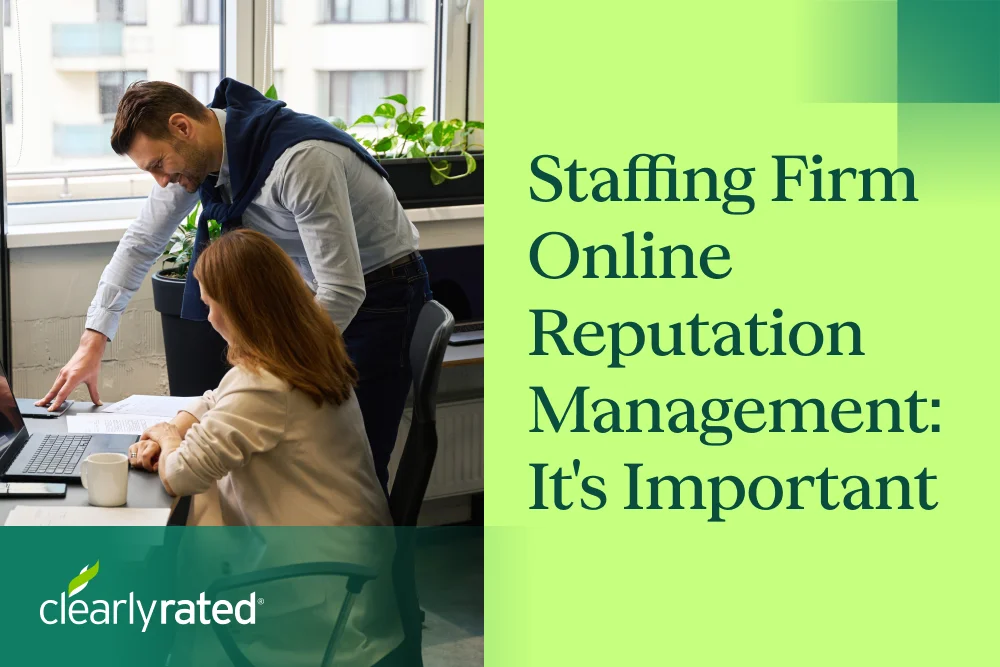




%5B1%5D.webp)
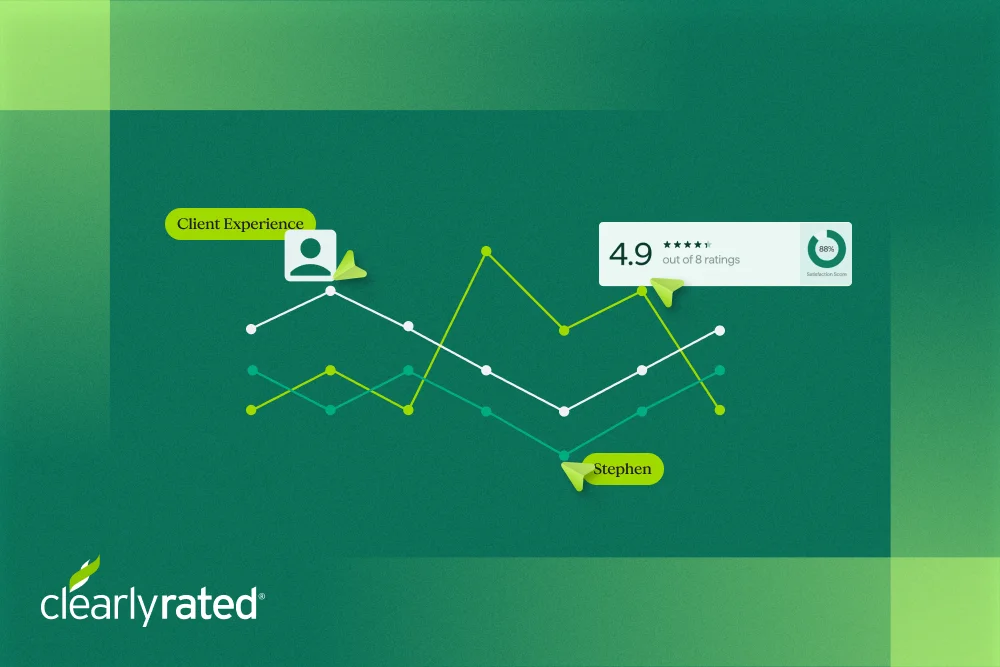






.png)









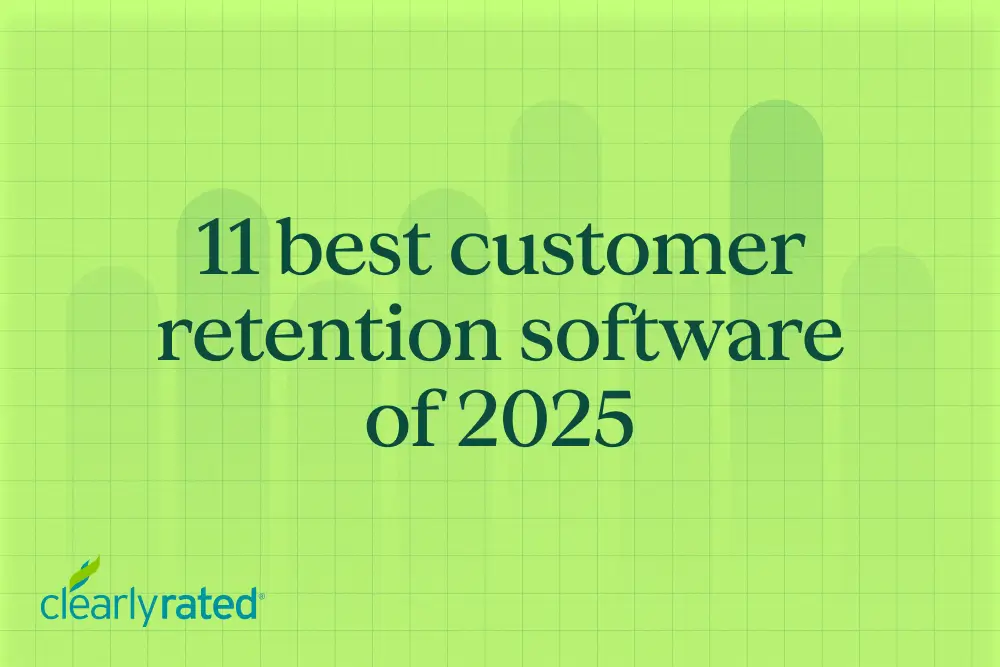

_%20The%20Ultimate%20Guide.png)
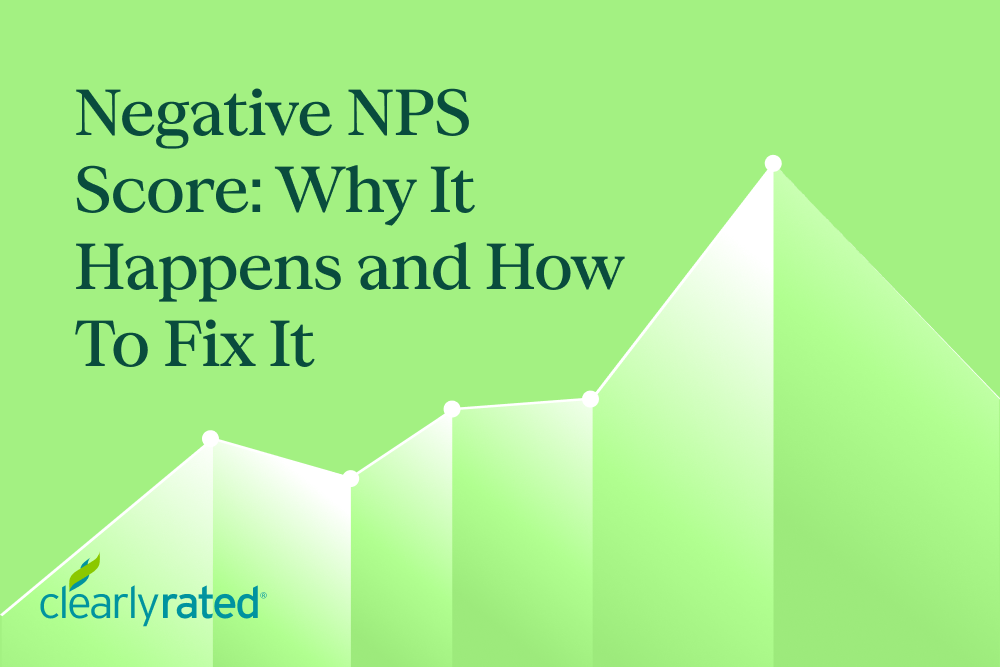
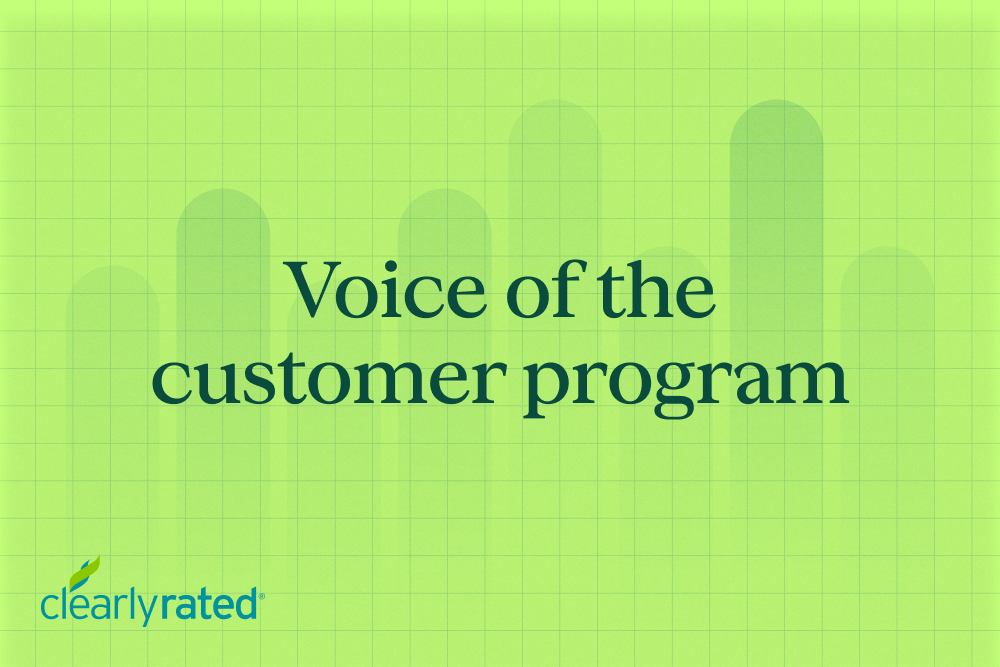



.png)



















%20in%20the%20Workplace.png)










.png)

%20and%20how%20can%20you%20increase%20it.png)
_%20A%20Step-by-Step%20Guide.png)

.png)
.png)




_.png)



%20in%202028.png)


_%20The%20Ultimate%20Guide%20(2024).png)











